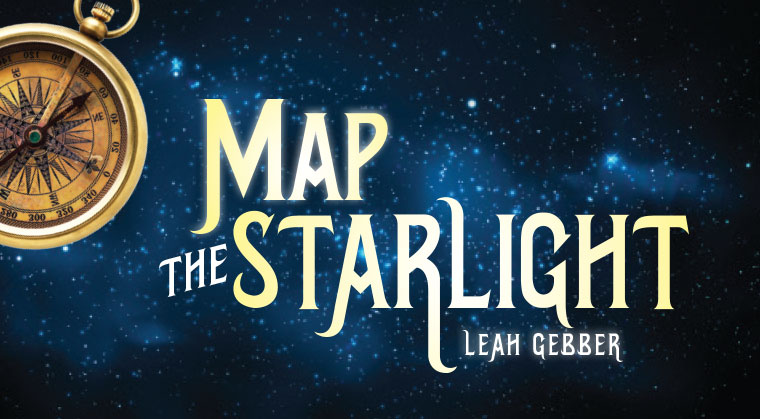Map the Starlight: Afterword


The Israel National Library is surprisingly small; the wide staircase and the great pine doors seem strangely out of place. One winter’s evening, I walked up the stairs into the music hall, found a chair, and looked around. The place was filled with men, with just a scattering of women. I was a good three decades younger than anyone present.
The professor got up to introduce his subject matter: a three-hour lecture on the subject of cartography, mapmaking. It was the inaugural lecture of a ten-week series. A genial man, he decided that we’d first go around the room and introduce ourselves, and explain why we had decided to attend.
There was a David who was a historian, Yishai who was a tour guide, and as we went around the room, variations on the theme: Avraham and Shai and Gilad and Kobi, historians or geographers or tour guides, all. My turn came. I could feel the heads swivel around to me. “I’m Leah Gebber, and I’m an author.”
Well, that caught everyone’s attention. “An author?” the professor asked. “And what is your subject matter?”
“The cartographers of Mallorca.”
“Ah, so you write historical fiction?”
I nodded. “That’s right. And part of the inspiration for my story is Abraham Cresques’s Catalan Atlas of 1375.”
During the lecture, when others were told to save their questions for later, as there was material to cover and we didn’t want to be there all night, did we, I put up my hand and asked the professor to explain the connection between astronomy and mapmaking — and I got an answer.
Being an author, I’ve discovered, is a privileged position. Simply because you need to know a little bit about a lot of different things (mostly things you have no idea about), all kinds of people are willing to stop and explain. And they take pleasure in your efforts to translate just a touch of their life’s work into something many can enjoy.
Map the Starlight was a wild ride of mainly disparate elements, each of which fascinated me in some way, and each of which found their way into the story. The astrolabe. Maps. Astronomy. Censorship. Medieval medicine.
One day, a friend saw me waiting for my son’s bus and came over to say hi. “What are you reading?” she asked, seeing the sheaf of papers in my hands. It was a scholarly paper: “Conversion in Medieval European Rabbinic Literature.” I could be waiting at a parent-teacher evening, trying to wrap my head around a translation of the Ibn Ezra’s work on astronomy. Shabbos afternoon, I’d sit in the park, wading through the account of the 1240 disputation on the Talmud.
There is something incredibly humbling about the creative process. You put all the ingredients into your mind, and then wait and think and play around with them for long enough until somehow, each element finds a place in the story and forms a whole that makes sense. I can’t explain how it happens, only that when you sense the pieces slowly falling into place, in ways you never imagined, it’s an exhilarating experience.
Which is why story is such a powerful medium. Our lives are made up of a thousand different elements. We believe that none is random. They will come together and build something — build us — in a way that is often surprising, often confusing, but ultimately comes together into a cohesive whole that leaves us wondering.
(Excerpted from Family First, Issue 603)
Oops! We could not locate your form.


